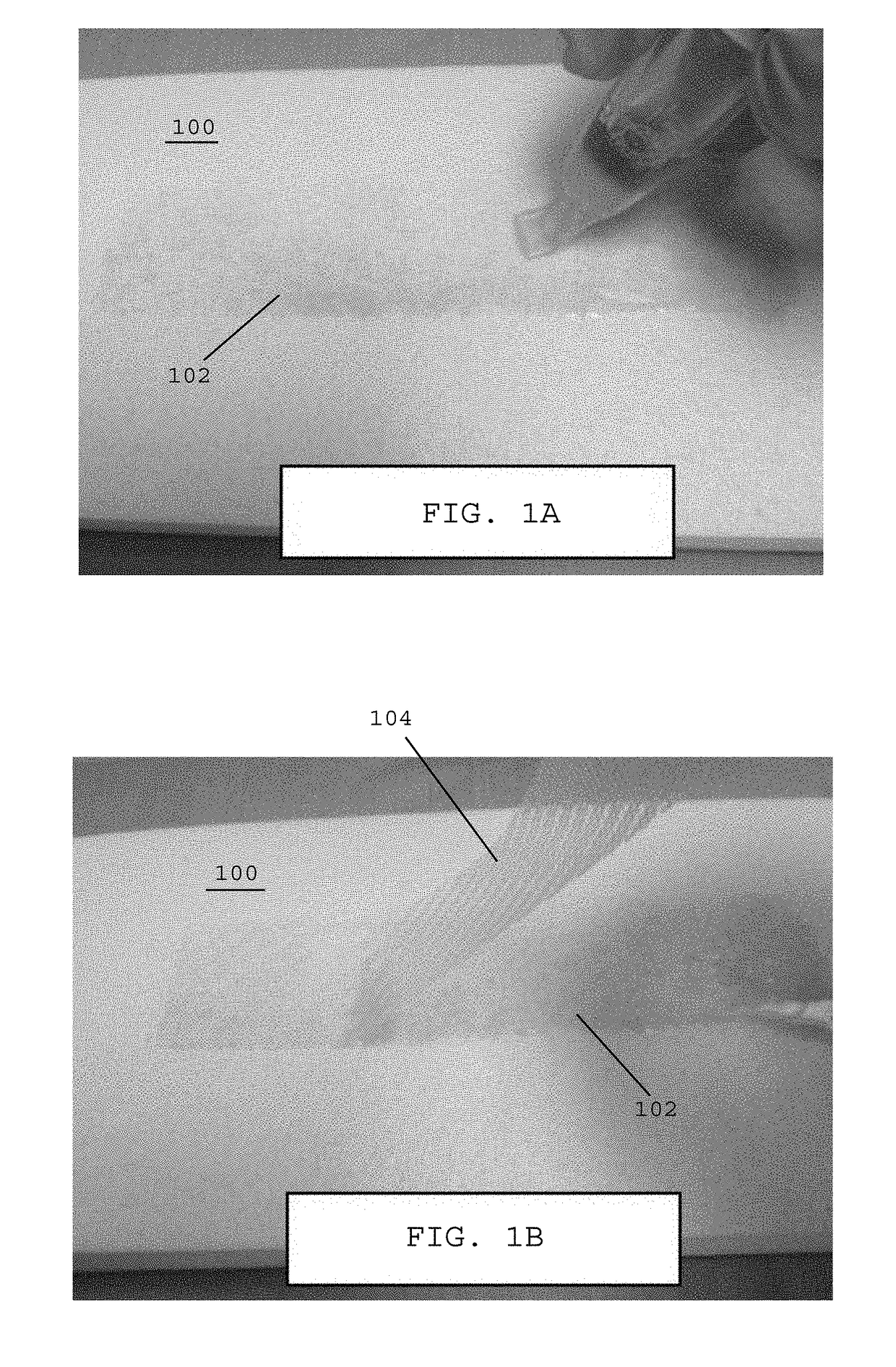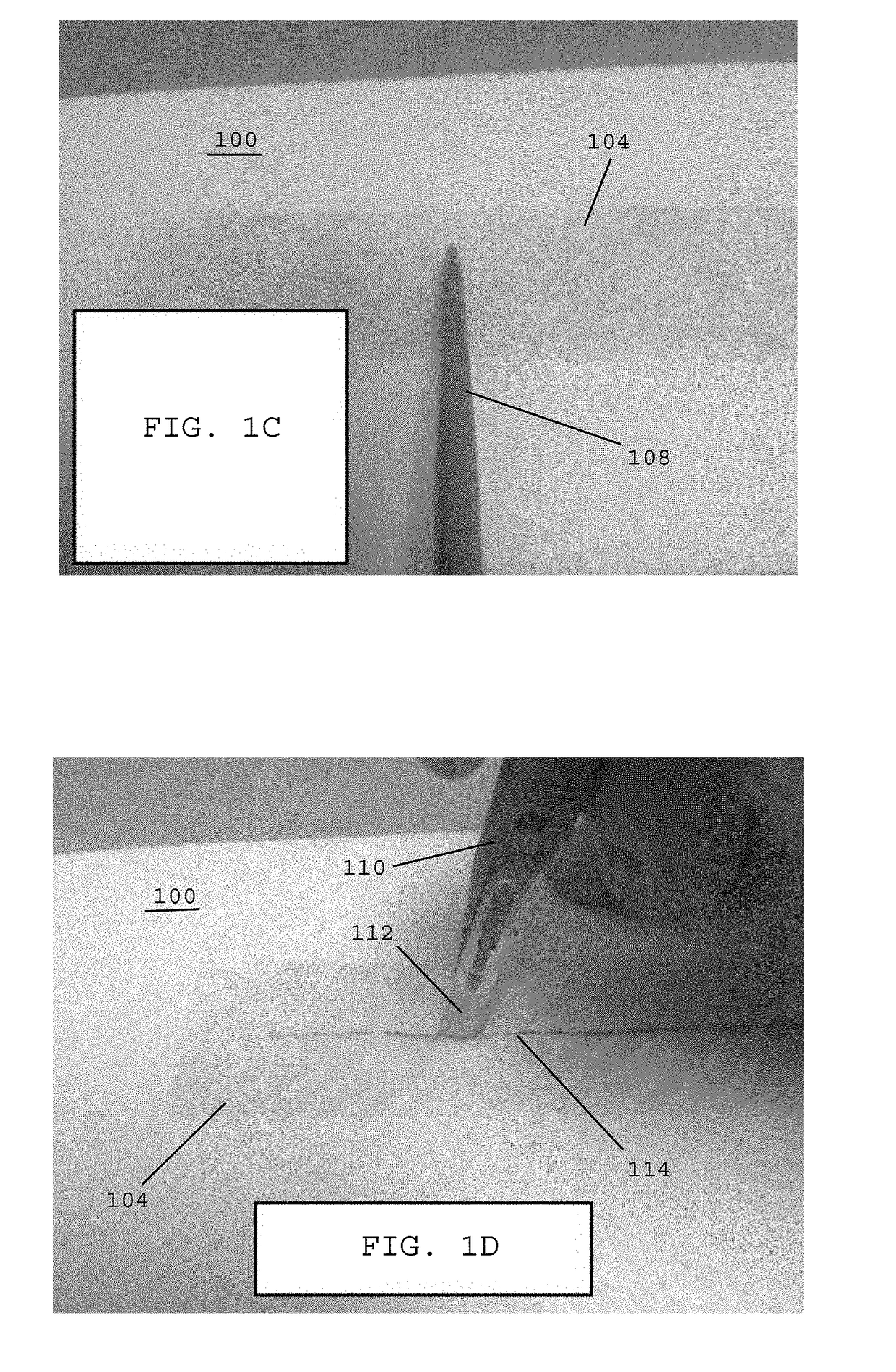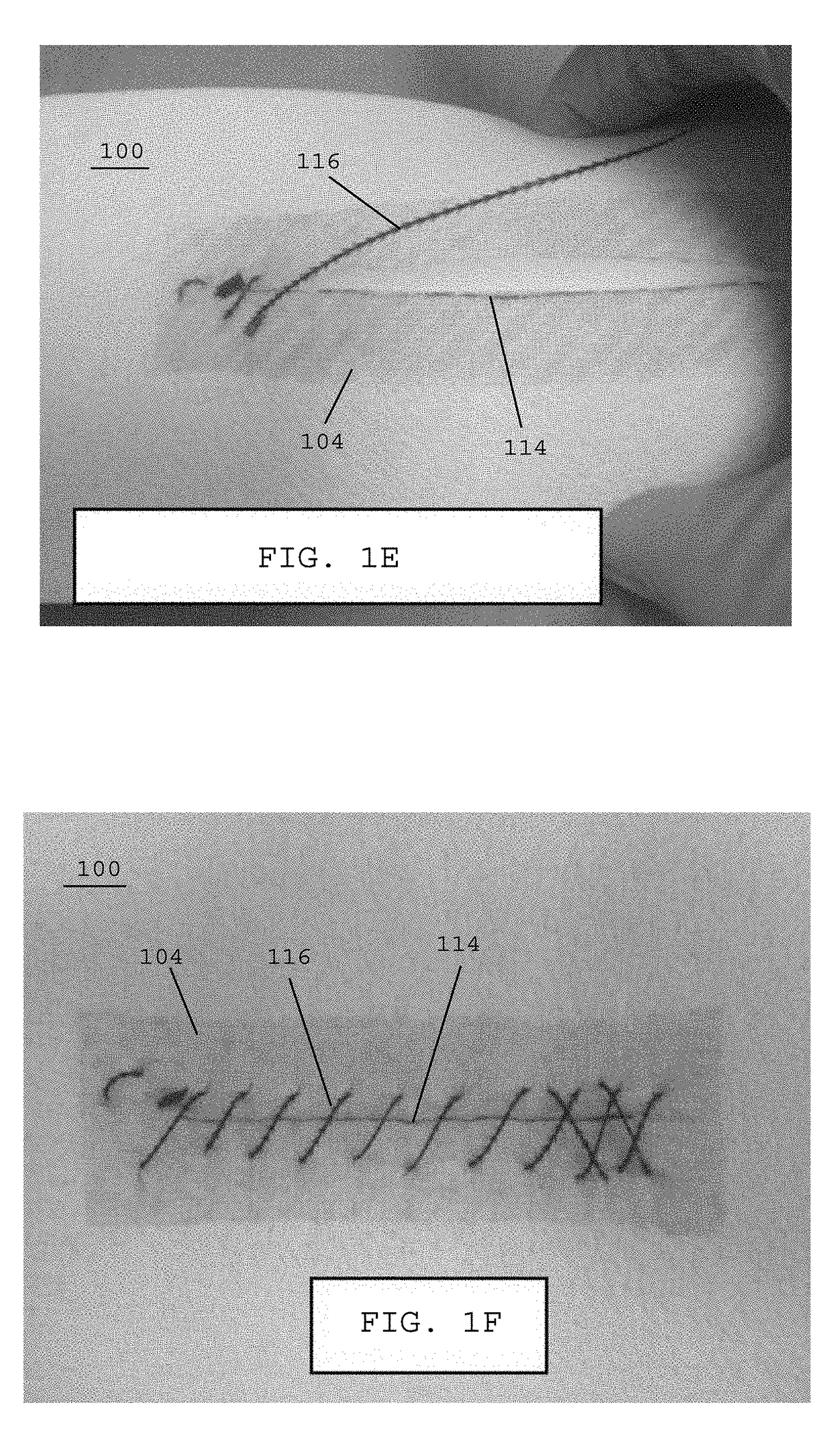Systems and methods for closing incisions formed in fragile tissue
a technology of fragile tissue and incision closure, which is applied in the field of surgical instruments and procedures, can solve the problems of suture tearing out, fragile tissue repair, and inability to close surgical incisions,
- Summary
- Abstract
- Description
- Claims
- Application Information
AI Technical Summary
Benefits of technology
Problems solved by technology
Method used
Image
Examples
Embodiment Construction
[0061]Referring to FIG. 1A, in one embodiment, fragile tissue 100, such as subcutaneous fragile tissue, may be prepared for a surgical procedure by applying a layer of a tissue adhesive 102 over an exposed surface of the fragile tissue 100.
[0062]Referring to FIG. 1B, in one embodiment, after the layer of tissue adhesive 102 has been applied to the exposed surface of the fragile tissue 100, a reinforcing incision drape 104 may be positioned on top of the tissue adhesive layer 102. The reinforcing incision drape may be a surgical mesh that is absorbable or non-absorbable.
[0063]Referring to FIG. 1C, in one embodiment, a tool 108, such as a prod or rod, may be used for unfurling and / or smoothing out the reinforcing incision drape 104 over the surface of the fragile tissue 100. The tool 108 may also be used to press the reinforcing incision drape 104 into the adhesive tissue layer 102 (FIG. 1B) previously applied to the exposed surface of the fragile tissue 100. In one embodiment, additi...
PUM
 Login to View More
Login to View More Abstract
Description
Claims
Application Information
 Login to View More
Login to View More - R&D
- Intellectual Property
- Life Sciences
- Materials
- Tech Scout
- Unparalleled Data Quality
- Higher Quality Content
- 60% Fewer Hallucinations
Browse by: Latest US Patents, China's latest patents, Technical Efficacy Thesaurus, Application Domain, Technology Topic, Popular Technical Reports.
© 2025 PatSnap. All rights reserved.Legal|Privacy policy|Modern Slavery Act Transparency Statement|Sitemap|About US| Contact US: help@patsnap.com



